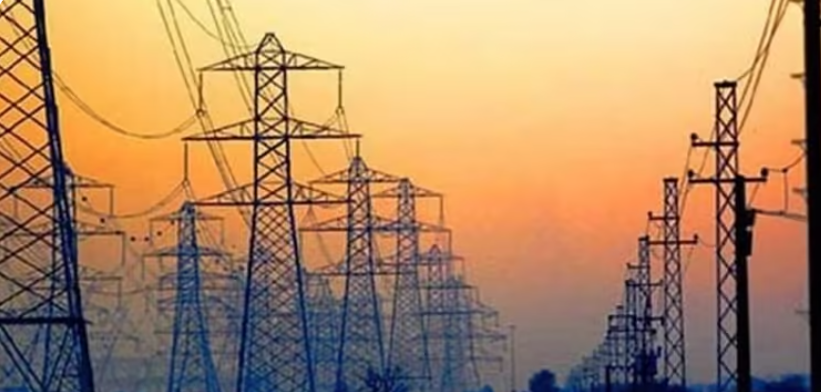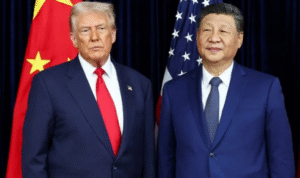PM Shehbaz Sharif Announces 3-Year ‘Roshan Maeeshat Bijli Package’ to Boost Industry and Agriculture

Meta Description:
Prime Minister Shehbaz Sharif has launched the “Roshan Maeeshat Bijli Package,” offering electricity at Rs22.98 per unit for Pakistan’s industrial and agricultural sectors over the next three years, aiming to strengthen production, exports, and economic stability.
Introduction
In a landmark initiative aimed at driving Pakistan’s economic recovery, Prime Minister Shehbaz Sharif on Thursday unveiled the ‘Roshan Maeeshat Bijli Package’ (Roshan Economy Power Package) — a comprehensive three-year plan designed to support the industrial and agricultural sectors through subsidized electricity rates.
The announcement came during a high-level meeting in Islamabad with a delegation of business leaders, industrial experts, and agricultural representatives. Under the package, both industries and farmers will receive electricity at a subsidized rate of Rs22.98 per unit until October 2028 — a move the government says will make local production more competitive and reduce costs for key sectors driving national growth.
Key Highlights of the Roshan Maeeshat Bijli Package
Rs22.98 Per Unit for Industry and Agriculture
Under the new policy, industrial and agricultural consumers will receive electricity at a fixed rate of Rs22.98 per unit for the next three years. This is a substantial reduction from the current rates:
- Industries: From Rs34 to Rs22.98 per unit.
- Agriculture: From Rs38 to Rs22.98 per unit.
The government says this initiative is designed to stimulate productivity, lower input costs, and increase output capacity across major sectors of the economy.
“This package is a beacon of hope for our industries and farmers. It will drive exports, generate employment, and reduce the cost of doing business,” said Prime Minister Shehbaz Sharif during his address.
Implementation Period
The Roshan Maeeshat Bijli Package will remain in effect from November 2025 to October 2028, covering a three-year cycle of fiscal and energy reforms.
During this period, the government will provide additional units of electricity at subsidized rates to both sectors. Officials stated that the subsidy would be financed through a combination of budgetary allocations and improved energy efficiency programs.
Government’s Objectives Behind the Package
Boosting Industrial Productivity
One of the key goals of this initiative is to revitalize industrial growth by reducing operational costs and improving profit margins. The energy-intensive industrial sector — particularly textiles, cement, steel, fertilizers, and manufacturing — has long struggled with high electricity tariffs that reduce competitiveness in international markets.
Prime Minister Shehbaz Sharif said the new package is meant to “revive the confidence of industrialists and exporters” by ensuring a predictable and affordable energy supply.
“Our aim is not just to provide relief but to empower industries to grow, expand, and compete regionally,” the PM added.
Strengthening the Agricultural Backbone
Pakistan’s agriculture remains the largest employer and a cornerstone of the national economy, yet rising energy costs have made irrigation and mechanization unaffordable for many farmers.
The new subsidized electricity rate aims to:
- Support tube-well irrigation systems.
- Enhance farm mechanization and food production.
- Lower operational costs for small and medium farmers.
“Agriculture sustains our people and feeds our economy. This package ensures our farmers have the energy to irrigate their fields and increase yields,” said the PM.
The Economic Rationale: Powering Growth Through Energy
Learning from the Previous Package
Prime Minister Shehbaz Sharif highlighted the success of the previous year’s industrial energy relief package, under which 410 gigawatt-hours of additional electricity were consumed by industries and agricultural units.
This, he said, contributed to:
- Higher industrial activity.
- Improved exports in textiles and manufacturing.
- More employment opportunities in the formal sector.
The positive results, he added, convinced the government to introduce an expanded three-year plan to sustain growth momentum.
From Crisis to Stability
Shehbaz Sharif acknowledged that Pakistan’s journey from economic crisis to recovery has been difficult but praised his economic team and energy ministry for steering reforms that stabilize the power sector and restore investor confidence.
“We are on the path to sustainable growth,” he noted. “This package reflects our government’s belief that a strong economy depends on affordable and reliable energy.”
Energy Minister Owais Leghari’s Role
The prime minister credited Minister for Energy Owais Leghari and his team for conceptualizing and executing the Roshan Maeeshat Bijli Package.
He praised the Energy Division’s technical evaluations, saying they helped design a framework that balanced fiscal responsibility with sectoral competitiveness.
“This is not just a subsidy; it’s an investment in Pakistan’s productive future,” Shehbaz remarked.
Officials from the Ministry of Energy explained that the package was finalized after consulting key stakeholders from the Chambers of Commerce, industrial associations, and farmers’ unions.
How the Package Will Work
For Industries
Industries connected to the national power grid will automatically qualify for the subsidized rate once the package takes effect. Additional electricity will be provided for peak-hour operations, production expansion, and export-based manufacturing.
The Ministry of Energy will monitor power consumption and disburse subsidies through the billing system to ensure transparency and avoid misuse.
For the Agricultural Sector
In the agricultural segment, farmers using electric tube wells and agri-based machinery will benefit from the fixed Rs22.98/unit rate.
The subsidy will be applied automatically through DISCOs (Distribution Companies) and will prioritize:
- Small and medium farmers,
- Cooperative farming clusters, and
- Export-oriented agri-industries.
Additionally, the Ministry of Food Security and provincial departments will collaborate to track productivity gains from the energy relief measures.
Broader Economic Impact
Improving Ease of Doing Business
Pakistan’s industrial competitiveness has suffered in recent years due to rising input costs, particularly energy. By offering a uniform, predictable electricity rate, the government hopes to improve the Ease of Doing Business Index, encourage new investments, and attract foreign industrial partnerships.
Encouraging Export Growth
The textile and manufacturing sectors, which together account for over 60% of Pakistan’s exports, are expected to benefit the most. Reduced energy costs will help stabilize export prices and strengthen Pakistan’s position in regional and international markets, especially against competitors like Bangladesh and Vietnam.
Supporting Economic Inclusion
By providing affordable electricity to small businesses and farmers, the government also aims to promote inclusive growth. Access to cheaper energy can empower rural communities, reduce poverty, and encourage youth entrepreneurship in the agri-tech and food processing sectors.
Expert and Business Community Reactions
Positive Reception from Industry Leaders
The Federation of Pakistan Chambers of Commerce & Industry (FPCCI) and various trade associations have welcomed the package, calling it a “timely intervention.”
FPCCI President Atif Ikram Sheikh said the move would “breathe new life into Pakistan’s manufacturing base.”
“This is a pro-growth policy that addresses our most urgent challenge — the high cost of production. Lower energy tariffs will help revive closed factories and attract new investment,” he stated.
Farmers’ Associations Applaud Relief
Agricultural groups, including the Pakistan Kissan Ittehad, praised the government for recognizing farmers’ needs amid rising costs of fertilizers, seeds, and fuel.
“Reducing the power tariff for tube wells will make a huge difference for farmers, especially in Punjab and Sindh,” said Kissan Ittehad Chairman Khalid Khokhar. “This is a step toward genuine rural uplift.”
Challenges Ahead
Fiscal Pressure on the Budget
Economists caution that sustaining the electricity subsidy for three years could strain public finances unless accompanied by reforms in the power sector.
Dr. Hafiz Pasha, a leading economist, noted that while the package supports growth, the government must control circular debt and ensure efficient subsidy targeting.
Need for Structural Energy Reforms
Experts also emphasize the need to invest in renewable energy sources, reduce line losses, and improve billing efficiency to make such relief measures sustainable in the long term.
Without addressing these systemic issues, analysts warn, energy subsidies could burden future budgets and limit resources for education, health, and infrastructure.
Looking Ahead: A Vision for Economic Self-Reliance
Prime Minister Shehbaz Sharif concluded his address by expressing hope that the Roshan Maeeshat Bijli Package would mark a turning point in Pakistan’s economic story.
He said the ultimate goal is to end Pakistan’s dependence on foreign loans by empowering its productive sectors to generate sustainable growth.
“Our farmers will feed the nation, our industries will power the economy, and together we will light up Pakistan’s future,” he declared.
The prime minister reiterated that economic stability cannot be achieved without energy stability, adding that the government would continue to focus on affordable, reliable, and clean energy solutions.
Conclusion
The Roshan Maeeshat Bijli Package represents more than a short-term energy subsidy — it’s a strategic economic initiative aimed at transforming Pakistan’s industrial and agricultural landscape.
By offering electricity at Rs22.98 per unit, the government hopes to revive manufacturing, strengthen exports, and support farmers while easing the burden of inflation.
However, experts agree that for this policy to deliver long-term results, it must be paired with energy sector reforms, fiscal discipline, and consistent policy execution.
If implemented effectively, this initiative could become a cornerstone of Pakistan’s path toward self-reliance and sustainable prosperity — illuminating both the economy and the lives of millions who power it.






